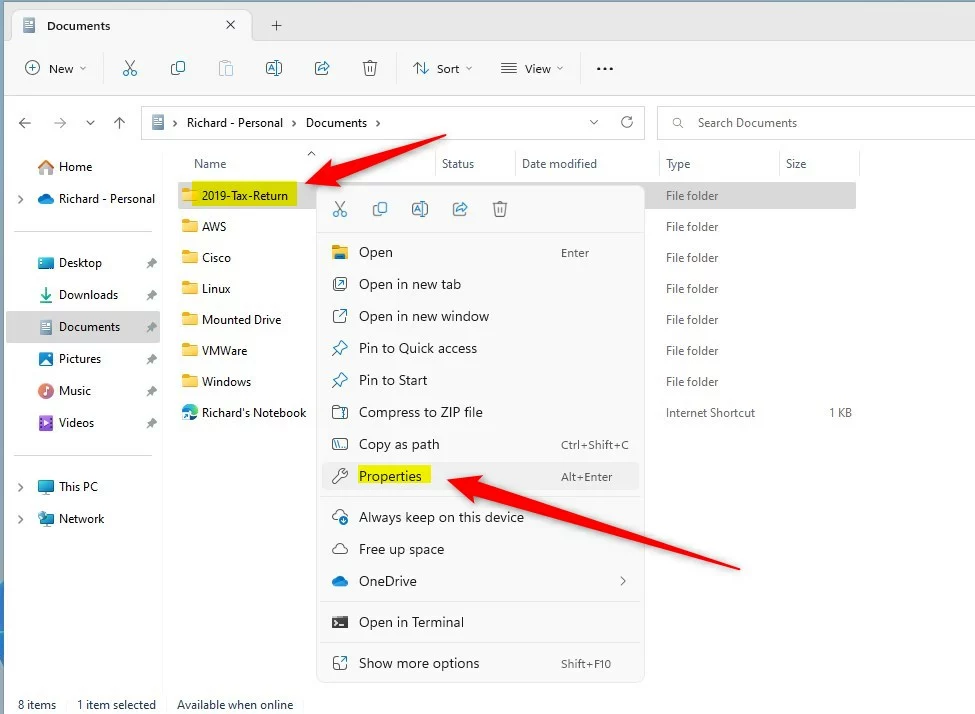This article describes the steps to encrypt or decrypt files and folders with an Encrypted File System (EFS) in Windows 11.
The Encrypted File System, or EFS, provides additional security for files, folders, or directories. A public-key system provides cryptographic protection of individual files on NTFS file system volumes.
Your data may be compromised if you lose a Windows device with sensitive information and file folders that are not encrypted. Encrypting the files and folders on your device increases security.
When a folder is encrypted, new files and folders saved there will automatically be encrypted by EFS.
Encrypted File System is not available on Windows 11 Home Edition.
The following items cannot be encrypted in Windows: compressed files, system files and directories, root directories, and transaction data.
Below is how to encrypt or decrypt files and folders using EFS in Windows 11.
How to encrypt or decrypt files and folders using EFS in Windows 11
As described above, The Encrypted File System, or EFS, provides additional security for files and directories. A public-key system provides cryptographic protection of individual files on NTFS file system volumes.
There are multiple ways to encrypt or decrypt files and folders in Windows 11. Below are a few steps one can take to accomplish this.
Encrypting or decrypting files and folders using the Properties option
Windows folder and file Properties command lets you quickly encrypt or decrypt an entire folder or file.
Here’s how to do that.
Select the folder or file you want to encrypt or decrypt. Then right-click on the folder or file and select Properties on the context menu.

On the General tab, click on the Advanced button.

On the Advanced Attributes window, check the box next to “Encrypt contents to secure data” to encrypt the folder or file and click OK.
To decrypt, uncheck the box and click OK.

Once you click OK, you will be prompted to “Apply changes to this folder only” or “Apply changes to this folder, subfolders, and files.”

Make your selection and click OK.
If encrypting a file, you will get a prompt to “Encrypt the file and its parent folder” or “Encrypt the file only.” Make your selection and click OK.

Encrypting or decrypting files and folders using commands
Windows allows you to encrypt and decrypt files using commands. Open Windows Terminal and select either Windows PowerShell or Command Prompt.
Then, run the commands below to encrypt a file or folder.
cipher /e "<full file path>"
Type in the full path of the file.
Example:
cipher /e C:\Users\Richard\Secret\Document.txt
To decrypt, run the cipher command with the /d switch.
cipher /d "<full file path>"
Example:
cipher /d C:\Users\Richard\Secret\Document.txt
Encrypting or decrypting folders using the commands
You can encrypt or decrypt folders using the command prompt or Windows PowerShell. Open Windows Terminal and select either Windows PowerShell or Command Prompt.
To encrypt a folder, run the commands below.
cipher /e /s:"<full folder path>"
Example:
cipher /e /s:"C:\Users\Richard\Secret\Document"
To decrypt a folder, run the commands below:
cipher /d /s:"<full folder path>"
Example:
cipher /d /s:"C:\Users\Richard\Secret\Document
That should do it!
Conclusion:
- Encrypting your files and folders using the Encrypted File System (EFS) in Windows 11 provides an additional security layer for sensitive data.
- Utilizing the Properties option or Windows commands allows for seamless encryption and decryption.
- By encrypting your files and folders, you can mitigate the risk of compromising sensitive information in the event of a lost or stolen Windows device.
- It’s important to note that the Encrypted File System is unavailable on Windows 11 Home Edition, so users should consider upgrading to Windows 11 Pro for this functionality.

Leave a Reply